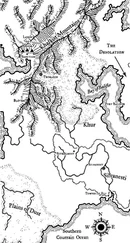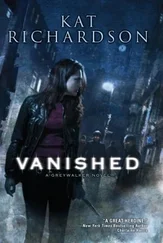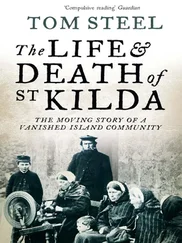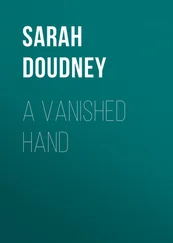67
Once I was back home, I returned to the footage. The last time Sam Wren was visible to anyone was the partial glimpse of his legs inside the carriage at Victoria. So that meant he definitely went as far as St James’s Park. Once the train entered the station I hit Pause and spent forty minutes going over the footage, rewinding it, tabbing it on, rewinding it, tabbing it on. By the end of it, as the train left St James’s Park and headed off towards Westminster, I was pretty confident he hadn’t disembarked. I’d been pretty confident all the other times I’d looked, but this time I felt a real certainty, a belief I couldn’t explain. I wondered whether writing out Sam’s life, every moment I’d discovered or had explained to me, had cemented my view of him. I accepted all the evidence against him, because it was compelling and real and difficult to dispute. But when I looked at Sam Wren I didn’t see a killer.
And I’d never seen one.
At Westminster, I paused the footage as the carriage doors opened. Everything I already knew about that day, everything I’d replayed over and over again in the footage, appeared on screen again. Two exits, one marked for those who’d landed at Westminster to take part in the protests; the other marked for those who worked close by, or were here to see the sights. The platform was already jammed, people everywhere, some bunched into pockets, some a little more spread out, but once commuters and protesters piled out of the train, it became a mass of bodies, some barely even identifiable as men or women.
About five seconds after the carriage doors parted, the fight broke out, further up the platform. As it did, the crowd seemed to get sucked towards it, like a black hole drawing them in, and a small amount of space was created at the near end of the station, closest to the camera and furthest away from where the confrontation was taking place. By that time, the Tube staff had already made their move, six of them descending on the fight and breaking it up almost immediately, two more coming in from positions off camera, at the bottom of the frame. One of them, a ginger-haired man I’d spotted on the other run-throughs of the video, was gesturing for people to continue moving towards the exits. The second was a stocky woman, stood at the doors on the end carriage, urging people out of the train – particularly anyone in a red protest T-shirt – before feeding them into the traffic flow created by her male colleague.
A red protest T-shirt .
Something flared, the vaguest tail of a memory, and as I fished for it, my eyes settled on the inside of the second carriage. The one Sam Wren had been in. I scanned from left to right, to every person I’d already seen. The woman with her headphones on, oblivious to what was happening. The guy in the suit, sitting down, head in a book but momentarily distracted by the fight on the platform.
And then the second man.
The one in the red T-shirt.
The same memory flared again, unrefined and cloudy. Was there something about him I hadn’t noticed before? He was bending down to pick up a protest sign, and positioned in a space behind a throng of demonstrators looking to disembark. I couldn’t see his face properly through the glass, had never at any stage got a clear view of his features inside the carriage – I’d just always known he wasn’t Sam. He was too big, too tall, had a different physicality, even different coloured hair. There was nothing remarkable about him, nothing unique or unusual to make him stand out. He was just a protester. He picked up his sign, he moved to the doors, he left the train. I knew his movements, just like I knew everyone else’s by now.
But I didn’t know his face.
I moved the footage on a couple of frames, and for the first time concentrated solely on him. What he was doing. Where he was headed. And as he leaned over to get the sign, I noticed a fractional movement close to his body, so slight it was virtually invisible. I had to rewind the footage just to make sure I’d seen it: he already had the sign under his arm . I could see the very edge of it – a triangle of white plastic – slowly slide out from under his elbow while the rest of the sign remained obscured at ground level.
Which meant he’d never been picking up the sign.
He’d been picking up something else.
Next was the moment where he actually did bring up the sign. As the video rolled on, it played out exactly the same way it always had: he straightened, stepped towards the doors, turning his back to the glass, and then there was a brief pause. Except now I saw something else I’d never been looking for before: a weird shift to his right, like a jolt. Like he was pulling on something . Seconds later, he turned around again, facing the glass, but the sign was fully up in front of him.
As if in a deliberate move to disguise himself.
Before long, he was back in shot: he was standing behind the protesters at the door, the lower half of his body visible, the red protest T-shirt over a pale blue fleece. But it wasn’t an official protest T-shirt. As I’d noted the very first time I’d watched the footage, it had red and white checks on the sleeves.
Checks.
I paused the video.
Is it the checks?
I wanted to get a clear view of his face, but all I could see were his legs, part of an arm, and his hand holding the sign. There were other protesters either side of him, trying to squeeze their way out of the train, everyone jostling for space. But, even in among them all, even though I couldn’t see his face, something about the man was suddenly familiar to me.
Do I know you?
I tabbed forward, quicker this time, punching at the cursor with my fingers as the footage rolled on. Moments later, he was finally at the doors and the crowds in front of him were fanning out onto the platform. Except for one person.
One person stayed close to him.
Which was when everything changed.
68
The man at the doors of the train paused and then joined the other groups being funnelled towards the platform exit. I hadn’t been looking for him. I’d been looking for Sam. I’d been looking for Sam on his own . I’d been looking for him in a suit, or in a protest T-shirt that had been pulled over a suit, or – at the very least – over a shirt and tie. If he’d removed his coat and jacket in order to put on the T-shirt, it made sense that he would have been carrying them, or they would have been inside his briefcase.
But Sam wasn’t carrying a coat or jacket.
He wasn’t even holding a briefcase.
And he wasn’t leaving the train on his own.
The man with the sign had his arm around Sam Wren’s waist, though if you weren’t specifically looking, you could barely even tell. I’d never noticed before. It looked like the two of them had just been pushed together by the crowds. Sam was in an official red protest T-shirt, pulled over his work shirt, but he had nothing else with him. I’d always figured the briefcase had gone with him, because if he’d left it behind, it would have been shipped off to lost property and ultimately traced back to him. But it had never surfaced. So either it had contained nothing that could lead back to Sam – or any kind of link to him had been taken out of the case before it was left in the train.
He looked woozy, unsteady on his feet, but the man was keeping him close. This was the perfect morning to drug someone: there were so many people, so many protesters dressed the same, that no one batted an eyelid. Sam still seemed capable of walking, still seemed capable of being manipulated, but he had no fight in him, no way of preventing what was happening. That was enough to make him pass unnoticed. And the man knew exactly where the CCTV cameras were in order to save drawing attention to the two of them. There were only the checked sleeves of his red shirt, and the sign. No clear view of his face. He made sure the same was true of Sam too: inside a second of hitting the platform, he raised the protest sign above their heads, shifting it across so nothing of Sam’s upper half was visible any more.
Читать дальше












